|
|
|
||||||||||||||||||||||||||||||||||
|
|
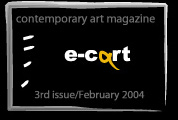 |
|
|
||||||||||||||||||||||||||||||||
|
|
|
 |
 |
|
|
||||||||||||||||||||||||||||||
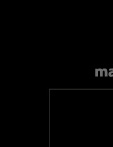 |
|
|
|
||||||||||||||||||||||||||||||||
 |
|
|
|
||||||||||||||||||||||||||||||||
 |
|
||||||||||||||||||||||||||||||||||
|
|
|
|
|||||||||||||||||||||||||||||||||
 |
|
||||||||||||||||||||||||||||||||||
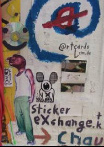 |
|
|
|||||||||||||||||||||||||||||||||
|
|
|
||||||||||||||||||||||||||||||||||
 |
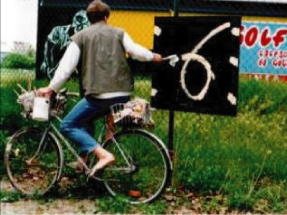 |
|
|
||||||||||||||||||||||||||||||||
|
|
 |
|
|
||||||||||||||||||||||||||||||||
|
|
 |
|
|
||||||||||||||||||||||||||||||||
 |
|
||||||||||||||||||||||||||||||||||
 |
|
|
|||||||||||||||||||||||||||||||||
|
|
|
|
|
|
|
||||||||||||||||||||||||||||||
|
|
|
|
|
||||||||||||||||||||||||||||||||
|
|
 |
 |
|
||||||||||||||||||||||||||||||||
|
|
|
||||||||||||||||||||||||||||||||||
| |
|
||||||||||||||||||||||||||||||||||
 |
|
|
|
||||||||||||||||||||||||||||||||
 |
|
||||||||||||||||||||||||||||||||||
 |
|
||||||||||||||||||||||||||||||||||
 |
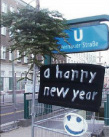 |
|
|
||||||||||||||||||||||||||||||||
|
|
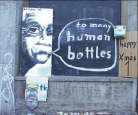 |
|
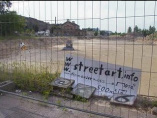 |
|
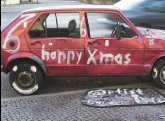 |
|
|
||||||||||||||||||||||||||||
 |
|
||||||||||||||||||||||||||||||||||
|
|
 |
|
|
||||||||||||||||||||||||||||||||
|
|
|
||||||||||||||||||||||||||||||||||
|
|
|
|
|||||||||||||||||||||||||||||||||
 |
|
||||||||||||||||||||||||||||||||||
 |
|
||||||||||||||||||||||||||||||||||
 |
|
||||||||||||||||||||||||||||||||||
 |
|
||||||||||||||||||||||||||||||||||
|
|
|
||||||||||||||||||||||||||||||||||
|
|
|
||||||||||||||||||||||||||||||||||
|
|
|
|
|
|
|
|
|
|
|
|
|
|
|
|
|
|
|
|
|
|
|
|
|
|
|
|
|
|
|
|
|
|
|
|
|
6 and how "certain signs are used for certain aims" (the Artist 6)
Number 6 painted with blue or white paint on a mound of wet wood and iron,
laying aside the road, number 6 on the broken windows of a deserted house,
number 6 on a traffic sign, 6 on a poster with a naked woman, on a dislocated
stone in the street, on a mattress stuck to a fence, 6 on the door of a supermarket,
6 on a recycle bin and on the wastes inside, 6 on a paint can hanging from
a tree, on a disused toilet thrown into the street, 6 on the Berlin wall and
on the back of a chair in the subway.
When I met the artist 6 on Brunnenstrasse in Berlin-Mitte, he was in the middle
of a discussion with a "citizen" who was claiming for his bicycle,
which he had found inscribed and suspended in an installation on the wall
of a building. You can also see the Artist 6 sometimes crossing, in a rush,
on the bicycle, the streets of Berlin, with a paint can in one hand, with
a brush in the other, that he uses to paint his 6 in the way.
Number 6 inscribes, cuts, colors, emphasizes, re-formulates, and invigorates
in an obsessive manner urban fragments. It seems to be everywhere , it fits
to every support, comes out of nowhere, makes you laugh, aggresses you, forces
upon you an aesthetic perception of otherwise invisible details. Often, the
artist also paints web and e-mail addresses (www.6cm.de, www.6km.de, www.1l.de,
www.@rtberlin.de, www.@rtist.info, www.p@inting.xy, www.1cm.de). He adds his
signs every day, updates them according to the changing dynamics of the material
offered by the street.
The talking with Artist 6 is difficult. The meaning of his own works is placed
by the artist in the field of the web inventions: the optimization of the
quest methods, the development of a larger task-bar, the creation of free
web addresses for artists. He looks upon his urban intervention as a way of
communicating publicly his inventions, the aesthetic quality and the number
of inscriptions acting as an efficient persuasive element. I tried to ask
the artist about his role in the Berlin street-life, but he inevitably turns
the discussion to technical explanations that are suffocating and mostly unintelligible,
explanations that he develops also on his home pages that he publishes - as
he likes to state - on the street. The practical relevance of his inventions
remains confuse, the labyrinthine sites are stuffed with links that are often
not opening or closing after accessing, the personal addressing to the site's
visitor is mixing with fragments calling Microsoft company to accredit his
inventions. The chaotic-childish graphic design composes in the homepage the
literary sketches of the so-called Red Riding Hood with fragments of a pink
diary, of the mysterious correspondence Tristessedeluxe, propositions of reconfiguring
the web pages, new methods of using the browser, with digital photo diaries,
with daily updates from the artist, in order to remind his last interventions.
Surfing on this website is exhausting for the visitor and for this one's computer,
but configures an amazing vision through its uncensored effervescence, a vital,
intimate cyberspace.
"My first action in the public space was to occupy the 1st place in the
phone book". At that time, his name was not number 6, but the letter
A, which he painted as an identity sign on the streets of Berlin, accompanied
by the image of a telephone. In the catalogue of trades he introduced a new
one, calling himself an Aktionsfotokunstler,"because I take pictures
of my actions".
The 6 appeared one year later (1995), accompanying polemically a debate around
the depositing of atomic wastes on the land of Germany. The explicit sexual
connotation - through the form of 6 and its German pronunciation (sechs as
a homonym of the word sex) - claims itself from the character-concept, named
by the artist Atom-Dildoo, a character fighting "globally for the replacement
of atomic energy with sexual energy". Dildoo - the male sexual organ
- is graphically transcript as dild¥ (double o = the infinite), to imply
an allusion to Einstein's statement: "Infinite is the universe and the
human folly".
The tendency to saturate the visible surface of the urban medium with his
signs, comes out of the need to impose his message, that would be deeper absorbed
by the city as it will address to a bigger number of passersby. The quantity
of graphic signs determines the quality of receiving, on a large scale, of
the semantic content. The Artist 6 bets on the persuasiveness and efficiency
of the unique-image, manually painted and not mechanically generated, he bets
on the surprising plastic expression, even if subconsciously received by the
rushing people, and on the sexual inner content, that has a general code.
His message is meant to act in the public space of the street, of the net
(the artist has no less than 50 homepages) and from here to enter the private
space - one's own PC - , that everyone has the theoretical possibility to
reconfigure after the artist's specifications. The graphic signs are mentally
stored and act as mark of the web addresses, which the passerby is supposed
to access on the first occasion. Here he will find propositions that will
optimize the processes of quest and configuration of the web page, and all
these absorbed, they will determine a creative intensification of the personal
cognitive processes. "I paint and create for more valuable solutions
that can be obtained through intense thinking. The preoccupation with matter
can bring a qualitative optimization that I try to transmit trough a fusion
between painting and my technical inventions. Still nothing changes. I should
come out with a gun, or other constraints to determine people to deal with
such things. The purpose I have settled myself is to act in a private/specific
field and try to generate, from this point of view, a changing upon people
that have a consciousness similar to mine. I will try to encourage them to
act in the same spirit, upon their circle of known people." "My
signs make an explicit statement: a) think deeper and look for different solutions
and b) concretely: apply more efficiently the means offered by the web program
you use." "Certain signs are used for certain purposes. I see my
work as a sign with such content as: Drivers, don't make any more car accidents.
The stake is that I succeed in transmitting through this sign (6) the content
I want to give to it. I wish that those who open their computers felt guilty
for the way they are driving their cars. My signs are in the public space,
on the internet and inside each user's computer. The artistic perspective
is for me given by the possibility to enter any personal computer. Because
the signs are transmitting contents."
The artist's discourse is from place to place a network of logic links that
are difficult to follow causally, but it becomes even more attractive through
the autonomy of an often humorous thinking (also self-referential). With his
actions, conceived as a unitary theoretic and practical program, the Artist
6 aims at a universal "optimization" of existence. The numbers-factors
become the active, visible signs of an ethical and aesthetical function that
is meant to create, globally, new private identity hypostasis. The aesthetic
content that the Artist 6 sees his work associated with is not for him neither
the graphic image of his sites, nor the plastic value of his urban installations,
but the quality of his work to configure/model the thinking of each individual.
One might sooner talk about an aesthetic thinking (since the thinking is shaping,
reconfiguring), but also of an aesthetics of thinking (since the field of
artist's action is in this case thinking).
The Artist 6 frames his work within Berlin art scene relying on an unusual
distinction between street-art and urban art. "On my website www.streetart.info
I've mentioned a short history of street art, where I explain that street-artists,
unlike urban artists, avoid any damaging of the urban support they use. It's
according to this principle that I choose the place where I intervene (old
walls, uninhabited houses, etc.), and if I stick posters on the wall I'm taking
care that they can be easily taken out. Thus, neither the police have anything
to reproach to me."
More than 1000 digital images, gathered by Jurgen Grosse, build a virtual
gallery for urban art and street art (www.urban-art.info), where the "wandering"
art from Berlin is systematized, attributed, credited, with punctual cultural
receptiveness for this phenomenon. Contradicting somehow the genuine character
of an outdoor anonymous art, Jurgen Grosse founds in 1999 also an exhibition
space - Urban Art gallery - the place of meeting for the street artists (Brunnenstrasse).
Here the artists taken from the street are invited to replace the graffiti
on the walls with painting on canvas and panel, and the underground action
with the status of artist. The gallerist provides them also with dwelling-studios
at the floor of the building, an advantage that will profit from also the
Artist 6 in a 2 years residence.
The Artist 6 founds in 2001 an independent group around a free space of creation
in 119
Chaussestrasse. Here he will gather freelance artists with the same preoccupations
that he has met at an urban art festival organized by the cultural center
Tacheles. In the institution's courtyard, loaded with heavy sculptures, revolutionary
and anti-consumist art manifestos, and shelters for the artists, built with
arte povera means, the artists are invited to bring their drawings, installations,
materials and ideas in order to "produce" themselves right there,
in interaction with the visitors.
The Artist 6 finds here not only the impetus to found a new project and future
collaborators, but also the ideal gallerist, who will appear under the name
of Lady 6 on the site of the new gallery "Minus" ("Minus because
it's vis-à-vis the supermarket Plus"). The gallery has also the
nickname "Bluhende Landschaften" - blooming landscapes - an ironic
allusion to the welcoming gardens of the Tacheles center and to a fragment
of president Schroeder's speech, who had promised a Germany like a blooming
landscape.
The site of the gallery can be visited at www.@rtist.info. "This is a
good way to reach my works and my concept" - systematized and somehow
simplified by the gallerist Lady 6.
In present, the artist has a financing from the European Union to make public
(through his specific means) the web address of the gallery, which is itself
supported by the EU as a space of stimulating the non-mainstream tendencies.
The artist's future projects are meant to extend his space of action to other
German and European cities. Stickerexchange.tk will be a collaborative action:
a friend will draw the 6 for a week everywhere in Munster, and the Artist
6 will put the posters and stickers of his friend in Berlin. I asked the Artist
6 if he doesn't care for an authorial right to the painting of 6, as a self-referential
sign, as an "original" that acquires its conceptual content if it's
only he who paints it. Still, the Artist 6 declares that it would be funny
"that somebody else paints my 6 and I can finally take a break. Anyway,
I wouldn't mind finding the 6 painted by somebody else in the city, it would
in fact be advertising for me. And someone who would start seriously such
a thing should - in order to really compete with me - paint a double quantity
of inscriptions that would mean a job of about 20 years."
Another project (Bottleposter.tk) consists in spreading - this time in an
international context - of a cardboard stencil with the shape of a bottle,
where a new web address should appear: 11.de ("the address must always
be in accord with the form-support"). The stencil will be multiplied
by artists from different European cities and put on as many urban contexts.
"The basic idea is that any traveler who reaches a foreign city finds
even from the beginning something familiar in the new urbanscape. One can
speak here about the globalization that touches ideas and products: you see
in Berlin a work made in Moscow, where at the same time there is an identical
work that is made in Paris. Such an approach could reach millions of people."
The Artist 6 plans also to inter-mediate for those who are interested in getting
a free mail address, with the national extension (tk) of an insular state
near the New Zeeland, a state with 1000 inhabitants. "That's how I also
advertise for the island. I also want to boycott the infrastructure of the
commerce with web address." "I have in plan also to transpose my
inventions in an intelligible system for those who are not using the European
graphic signs for the web: Chinese, Arabians." The principal aim is however
that of occupying the first position as Plakatierer in the results listed
by Google. Within a short time, the amount of articles (enriched by the artist
every day with new pictures) will allow him to surpass the great Plakatierer
in Los Angeles - Shepart Fairy . "My ability to launch myself to the
1st place is decisive for the evolution of my work". "Presently,
my works are on a CD about Berlin, released by the Government, where my works
are exclusively representing the art actions of the city. I was also honored
with an article in Who is Who."
The obsessive need to be number one, on the market of both artistic and economic
products, determine the artist to develop a cumulative technique of creation:
the quantity of 6 is continuing to grow, in the remotest districts of Berlin,
and the number of homepages is also growing, even if the artist only adds
on the net copies of previous publications. "As I know that an extra-copy
brings me 2-4 supplementary clicks per day. It costs me a half an hour to
make a copy, but the time lost is compensated with the new clicks. In present
I have 50 homepages."
The Artist 6 constructs and manipulates a symbolic code and an imagery with
emotional appeal, as indicators of a concrete "product" (web innovations),
which he presents as being - in a universal way - indispensable. In this respect,
his operating manner uses classical advertising techniques. "My inventions
are placed in the field of low-budget commercial. What I practice, however,
is an art project." "I try to impose the street as an informative
space. I manifest my works firstly on the internet, then in the public space.
It's much more expensive and complicated to make copies with the description
of the inventions on the net, and then to stick them in the street, than just
painting a simple address. The amount of information that can be absorbed
from the street is much smaller and it needs to be straighter."
The Artist 6 uses consequently mostly the advertising system: the imagistic
modality of representing the product/message. His objects and signs are easy
to make, visible from distance and naturally integrated into the urban landscape.
In any advertising complex, the receiver is previously educated to associate
presented form with the content within. The consumer is taught to read the
commercial message, in general, through a combination of text-slogan and image.
In his own manner, the Artist 6 imposes a visual encrypted form, based on
the same formula - product+image+text - that promise the consumer's satisfaction.
The particular side of his work is that the text-slogan is image and a selling
product (the addresses) at the same time. The receiving of the message is
made easier by the artist with the help of two classic elements in the advertising
discourse: the sexual underlining (for an unmediated communication) and the
repetition (for an accelerated storage of information). The street is primarily
a space of passage. The dynamics of presenting and receiving the message imposes
a frenzy rhythm of concentrated visual clips, succeeding each other. The artist
paints his signs in the rush of the bicycle, the passerby stops at the red
light and sees a 6 painted on the screen of the traffic light, than he crosses
the street and reads from the walk a web address written between the bands
of the crossway. Speed and fragmentation are constructing, paradoxically,
a consistent and constant identity image, through which the Artist 6 is self
(re) presenting publicly.
I find it interesting also the way the artist uses another essential component
of the persuasive advertising language: the equation to have = to be. In any
commercial, the product signifies and promise to the consumer not only the
inner satisfaction, but also a new mode of authentic self-defining, valuable
both on a social and private level, through the acquisition of the object
(the common saying: I am what I possess).
Once we assimilate, adopt and finally buy his innovations, the Artist 6 offers
us not only an optimization of the search results, but mostly a reconfiguration
of one's own cognitive processes, that lead to an optimization of every individual's
existence. Thus, the artist offers a vision, which materialization depends
on the buying of a product, accessible to anyone, in the world of an "electronic
democracy" .
"The Medium is the Message", stated Marshall McLuhan , offering
with precision and vigor a new analytical perspective, which the work of the
Artist 6 seems to be a paradigm for. The multi-semantic 6, the site specific
installations or the web inventions, (that can rest obscure in their informational
actual content) structure - with dry zeal and attractive candor - a language
and a surprising expression medium. It is through the medium itself, "invented"
by him that the Artist 6 transmits his cultural information, imposes a matrix
of interpreting/receiving or obtains a physical or social effect.
www.@rt.Berlin.de
www.street-art.de.vu
www.history.streetart.info
p@inting.tk
www.@ctor.tk
The-1st-speaking-Dildoo-is-named-T@lkmaster.de
Marta Jecu
|
|
|
||||||||||||||||||||||||||||||||||
|
|
 |
|
|
||||||||||||||||||||||||||||||||
|
|
|
 |
 |
|
|
||||||||||||||||||||||||||||||
 |
|
|
|
||||||||||||||||||||||||||||||||
 |
|
|
|
||||||||||||||||||||||||||||||||
 |
|
||||||||||||||||||||||||||||||||||
|
|
|
|
|||||||||||||||||||||||||||||||||
 |
|
||||||||||||||||||||||||||||||||||
 |
|
|
|||||||||||||||||||||||||||||||||
|
|
|
||||||||||||||||||||||||||||||||||
 |
 |
|
|
||||||||||||||||||||||||||||||||
|
|
 |
|
|
||||||||||||||||||||||||||||||||
|
|
 |
|
|
||||||||||||||||||||||||||||||||
 |
|
||||||||||||||||||||||||||||||||||
 |
|
|
|||||||||||||||||||||||||||||||||
|
|
|
|
|
|
|
||||||||||||||||||||||||||||||
|
|
|
|
|
||||||||||||||||||||||||||||||||
|
|
 |
 |
|
||||||||||||||||||||||||||||||||
|
|
|
||||||||||||||||||||||||||||||||||
| |
|
||||||||||||||||||||||||||||||||||
 |
|
|
|
||||||||||||||||||||||||||||||||
 |
|
||||||||||||||||||||||||||||||||||
 |
|
||||||||||||||||||||||||||||||||||
 |
 |
|
|
||||||||||||||||||||||||||||||||
|
|
 |
|
 |
|
 |
|
|
||||||||||||||||||||||||||||
 |
|
||||||||||||||||||||||||||||||||||
|
|
 |
|
|
||||||||||||||||||||||||||||||||
|
|
|
||||||||||||||||||||||||||||||||||
|
|
|
|
|||||||||||||||||||||||||||||||||
 |
|
||||||||||||||||||||||||||||||||||
 |
|
||||||||||||||||||||||||||||||||||
 |
|
||||||||||||||||||||||||||||||||||
 |
|
||||||||||||||||||||||||||||||||||
|
|
|
||||||||||||||||||||||||||||||||||
|
|
|
||||||||||||||||||||||||||||||||||
|
|
|
|
|
|
|
|
|
|
|
|
|
|
|
|
|
|
|
|
|
|
|
|
|
|
|
|
|
|
|
|
|
|
|
|
|